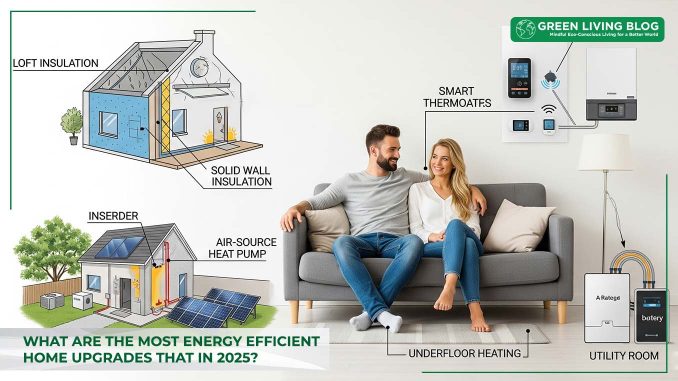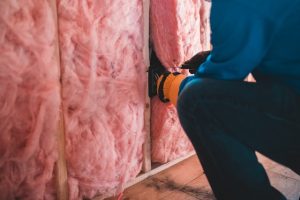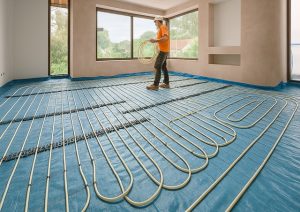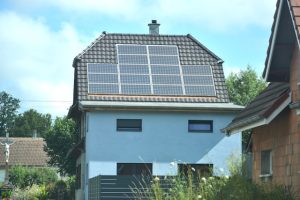
As energy prices continue to fluctuate and climate change remains a pressing concern, UK homeowners are increasingly looking for smarter, greener ways to upgrade their homes.
The good news is that making your home more energy-efficient doesn’t just help the planet – it can also save you a significant sum on your energy bills.
With a range of government grants, new technologies, and better insulation methods available, the time is ripe to invest in energy-efficient home improvements.
Whether you’re retrofitting a Victorian terrace or upgrading a Nineties semi, the following home upgrades offer some of the most impactful changes you can make – balancing cost, carbon footprint, comfort, and long-term savings.
1. Loft insulation

Around 25% of a home’s heat is lost through the roof, and adding insulation can drastically cut down on energy waste.
Typical cost: £300–£600
Annual savings: Up to £340
Energy efficiency impact: Can improve your EPC rating by 1–2 bands
Installing loft insulation is generally quick and non-invasive. It’s also covered by schemes like the Great British Insulation Scheme, helping reduce the upfront cost for many households.
2. Cavity and solid wall insulation
While loft insulation is relatively straightforward, wall insulation can be a bit more complex – although just as vital when it comes to keeping your home warm. Cavity wall insulation works well in homes built after the 1920s, while older homes with solid walls may require either internal or external insulation.
Typical cost: £2,700 for cavity walls and £8,000–£11,000 for solid walls
Annual savings: Up to £690 for detached homes with solid wall insulation
Energy efficiency impact: Can improve your EPC rating by 1–2 bands
Installing solid wall insulation is expensive and can be disruptive. However, it is also one of the most effective ways to significantly improve your home’s thermal efficiency, particularly if you’re planning a larger renovation.
3. Underfloor heating

Long associated with luxury renovations, underfloor heating is becoming an increasingly popular and energy-efficient heating option, especially when paired with low-carbon systems like air-source heat pumps (more on that below!).
By distributing heat evenly across the floor, this system requires lower water temperatures than traditional radiators, meaning your boiler or heat pump doesn’t need to work as hard.
Typical cost: £75–£100 per m² for a retrofit and £40–£60 per m² for a new build
Annual savings: Up to £300
Energy efficiency impact: Up to 25% more efficient than radiators
The main drawback is installation – retrofitting underfloor heating can be invasive and costly, so it’s often best considered during major refurbishments or in new builds.
4. Air-source heat pumps
Air-source heat pumps (ASHPs) are rapidly growing in popularity across the UK, thanks to improved technology and generous government support. They work by extracting heat from the outside air – even in winter – and converting it into energy to heat your home and water.
Typical cost: £10,000–£13,000 (Boiler Upgrade Scheme offers £7,500 grant)
Annual savings: Up to £290 compared to an old gas boiler
Energy efficiency impact: Up to 25% more efficient
ASHPs are ideal for well-insulated homes (with an existing EPC of A-B) and work best with low-temperature systems like underfloor heating. While the cost is high, grants can bring this technology within reach for many.
5. Double or triple glazing

Upgrading your windows to modern double or triple glazing can significantly reduce heat loss, eliminate draughts, and improve acoustic insulation. For many homes, it also enhances aesthetics and security.
Typical cost: £4,000–£7,000
Annual savings: £200–£300 depending on window count and quality
Energy efficiency impact: Can take your EPC rating from E/F to B/C.
Installation can be costly, but double or triple glazing can be an especially good investment if your current windows are old or single-glazed. Combined with wall and loft insulation, glazing completes the thermal envelope of your home.
6. Smart Thermostats
Sometimes, small changes make a big difference. Smart thermostats and heating controls learn your habits, automatically adjust settings, and allow remote control via smartphone – ensuring you only heat your home when needed.
Typical cost: £150–£300
Annual savings: £75–£100
Energy efficiency impact: Improves heating system efficiency by up to 20%
Popular models like Nest, Hive, and Tado offer detailed energy reports and integrate with other smart home systems. Just ensure your Wi-Fi is reliable to make the most of their features.
7. Solar PV Panels

Solar panels remain one of the most effective ways to reduce your home’s reliance on fossil fuels. With electricity prices still high, generating your own power can make a big difference.
Typical cost: £6,100 for a 4 kWp system
Annual savings: £500–£700 depending on location and you can sell surplus electricity back to the grid via Smart Export Guarantee
Energy efficiency impact: Reduce your carbon footprint by up to 1 tonne of CO₂ per year
While payback periods vary, solar panels increase your home’s EPC and add market value – anywhere from 4-14%. Pair with battery storage for even greater savings.
8. Battery storage
If you already have solar panels, adding a battery allows you to store excess electricity generated during the day and use it in the evening or during blackouts. This reduces reliance on the grid and boosts your return on investment.
Typical cost: £3,000–£7,000
Annual savings: £150–£200
Energy efficiency impact: Increases PV self‑consumption by around 30% and boosts overall household energy efficiency, contributing to EPC improvements.
For some households, battery storage tips the balance towards full energy independence, especially when combined with smart home energy management systems. Although do remember, batteries degrade over time, typically lasting 10–15 years.
9. Upgrade to an A-rated boiler

Not every home is ready for a heat pump. For those still using older gas boilers, upgrading to an A-rated condensing boiler can dramatically improve heating efficiency and lower emissions.
Typical cost: £1,500–£3,000
Annual savings: £280–£490
Energy efficiency impact: A new boiler can improve your EPC rating by 1–2 bands.
This upgrade is especially worthwhile if your current boiler is rated D or below. Though not a long-term green solution since boilers are still reliant on fossil fuels, it’s a sensible transitional step.
10. Draught-proofing and air sealing
Often overlooked, draught-proofing windows, doors, and floorboards can prevent heat from escaping and cold air from creeping in. It’s one of the cheapest and easiest ways to improve comfort and efficiency.
Typical cost: £50–£200 DIY; £200–£500 professional
Annual savings: £50–£100 as part of a wider insulation strategy
Energy efficiency impact: Around 175–250 kg of CO₂ saved annually.
Done properly, draught-proofing doesn’t impact ventilation and can make a big difference in older properties where heat loss is common.
![]()
Author Profile

- Eco Warrior by day, Eco Blogger by night trying to get the eco balance right.
Latest entries
 Green GuidesNovember 3, 2025The Beginner’s Guide to Making Your Own Nontoxic Candles at Home
Green GuidesNovember 3, 2025The Beginner’s Guide to Making Your Own Nontoxic Candles at Home Green Home GuidesOctober 14, 2025What are Eco-Friendly Tissue Options for Modern UK Homes?
Green Home GuidesOctober 14, 2025What are Eco-Friendly Tissue Options for Modern UK Homes? Best practicesSeptember 17, 20253 Ways Young Families Can Commit to Sustainable Living
Best practicesSeptember 17, 20253 Ways Young Families Can Commit to Sustainable Living EnvironmentSeptember 9, 2025Eco-friendly Gardening on a Budget: 6 Sustainable Choices that make a Difference
EnvironmentSeptember 9, 2025Eco-friendly Gardening on a Budget: 6 Sustainable Choices that make a Difference





Leave a Reply
You must be logged in to post a comment.